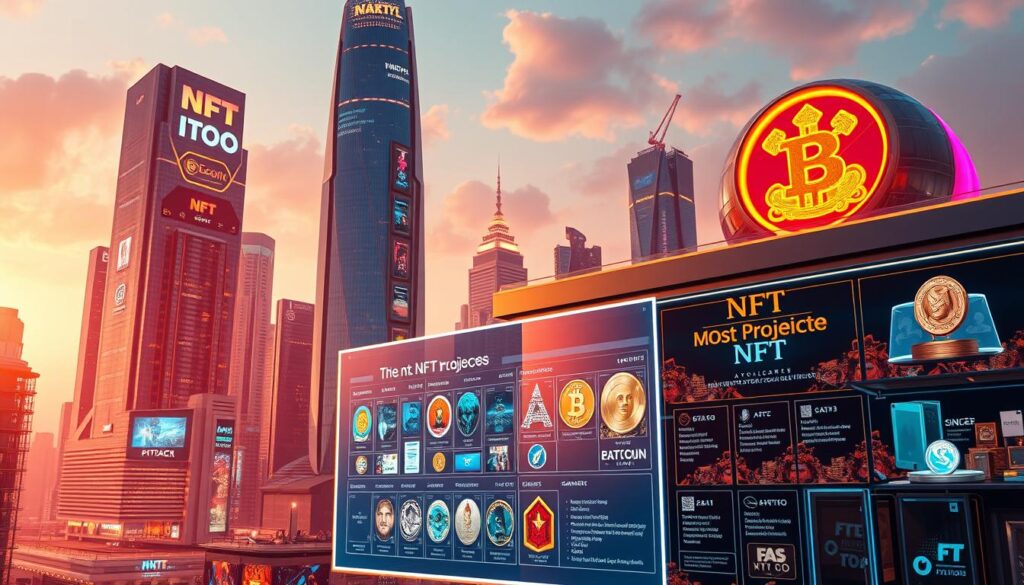Now Reading: Understanding NFT-based Login and Its Security Benefits
- 01
Understanding NFT-based Login and Its Security Benefits
Understanding NFT-based Login and Its Security Benefits

Digital identity management is evolving rapidly, and blockchain technology now offers a secure alternative to outdated password systems. By assigning unique cryptographic tokens to users, this method replaces vulnerable username-password combos with tamper-proof verification. Imagine accessing accounts without memorizing complex credentials—just proof of ownership through a decentralized ledger.
A recent project backed by seasoned developers and funded with $12,500 demonstrates this shift. Over 457 community votes and ₳105M in support highlight its potential. Unlike traditional setups, these systems use decentralized networks to validate identities, reducing risks like phishing or data breaches.
Each token acts as a digital passport, encrypted and stored on-chain. This approach eliminates centralized databases hackers often target. Platforms adopting this framework report fewer unauthorized access attempts, proving its effectiveness. Early adopters range from fintech apps to creative platforms prioritizing user safety.
As organizations seek future-proof security, blockchain-based authentication stands out. Its infrastructure integrates smoothly with existing protocols while adding layers of cryptographic protection. For users, it means simpler logins and peace of mind knowing their data stays private.
Key Takeaways
- Blockchain replaces passwords with unique, user-owned tokens for secure access
- Decentralized verification reduces risks of hacking and data theft
- Community-backed projects demonstrate growing trust in this technology
- Encrypted tokens act as tamper-proof digital identities
- Simplified logins improve user experience without compromising safety
What is NFT-based Login and Why It Matters?
The rise of non-fungible tokens is transforming how we secure online identities. Instead of relying on passwords, these systems use unique digital assets stored on blockchains to verify users. Think of it as owning a one-of-a-kind key that proves who you are across platforms.
Defining NFT-Based Login and Digital Identity
NFTs act as unforgeable proof of ownership in digital spaces. Each token contains encrypted data tied to a user’s identity, creating a portable credential. This approach turns digital assets into authentication tools, eliminating the need for memorizing passwords or resetting them after breaches.
Blockchain technology ensures every transaction and ownership change is recorded publicly. This creates an immutable history that prevents duplication. For example, Auth0 Lab’s Web3 integrations let platforms use NFT ownership to grant access, merging digital identity with asset management seamlessly.
The Role of Blockchain Technology in Enhancing Security
Decentralized networks remove centralized databases—common targets for hackers. When you use NFTs for access, verification happens across multiple nodes instead of a single server. This makes breaches nearly impossible without controlling the entire network.
Cryptographic keys embedded in NFTs add another layer of protection. Unlike passwords, these keys can’t be guessed or stolen through phishing. As more industries adopt this framework, users gain control over their data while enjoying simpler, safer logins.
Setting Up Your NFT-based Login
Implementing token-based authentication starts with two critical steps: securing your digital assets and integrating with platforms. Choosing the right tools ensures smooth access while keeping your data protected.

Choosing a Secure Wallet and Managing Digital Assets
Your wallet acts as a vault for NFTs and cryptographic keys. Software wallets like MetaMask or Trust Wallet offer convenience for frequent access. For maximum security, hardware options like Ledger store keys offline, shielding them from online threats.
Always enable two-factor authentication and backup seed phrases. Only download apps from official stores to avoid fake versions. Organize collections by labeling NFTs and tracking transaction histories for easy management.
Configuring Your Platform for NFT Integration
Platforms must support blockchain protocols like Ethereum or Solana. Developers often use APIs to verify ownership through wallet connections. Ensure your system checks token metadata and smart contracts during authentication.
Test integrations in sandbox environments first. Monitor for errors like failed signature validations or network delays. Regular updates keep compatibility with evolving blockchain standards, ensuring seamless access for users.
Implementing NFT-based Login on Your Platform
Modern platforms are adopting innovative methods to verify users securely. Blockchain-powered systems enable direct integration of digital ownership checks into authentication workflows. The Auth0 Lab solution, launched in 2022, demonstrates this through its Ethereum-compatible design that retrieves wallet addresses and NFT data across major chains.
Integrating Authentication Protocols and Smart Contracts
Start by connecting your platform to blockchain networks using services like The Graph. Developers input API keys and specify NFT contracts to monitor. This process allows real-time verification of token ownership through three steps:
- Deploy smart contracts that validate NFT metadata
- Establish wallet connection interfaces for users
- Set access rules based on token types or collections
EVM-compatible chains like Polygon and Binance Smart Chain simplify integration. Systems automatically check OpenSea and other marketplaces for valid NFTs. Token gating mechanisms then grant or restrict identity access without manual oversight.
Thorough testing ensures smooth operation across the ecosystem. Audit smart contracts for vulnerabilities and simulate high-traffic scenarios. Optimize gas fees and response times to maintain performance as user bases grow.
Exploring the Security Advantages of NFT-based Logins
Blockchain-powered authentication systems are redefining digital security standards. By replacing vulnerable passwords with cryptographic proofs, these methods offer enhanced security against modern cyber threats. Let’s break down why this approach outshines traditional models.

Enhanced Security Features Through Cryptographic Keys
Every NFT login relies on unique cryptographic key pairs. The private key stays with the user, while the public key verifies identity on-chain. This creates mathematically unbreakable authentication—no more guessing passwords or phishing scams.
Blockchain records every transaction permanently. Hackers can’t alter this history, making fake identities impossible. Unlike reused passwords, each key pair works for one account only. Brute force attacks become useless against this setup.
Mitigating Risks of Unauthorized Access and Duplication
Decentralized networks remove centralized databases that attract breaches. Since NFTs have unique token IDs, duplicating them is like copying a fingerprint—it won’t work. Systems automatically reject copied tokens during verification.
Smart contracts add extra safeguards. Multi-signature approvals or time-limited access rules can be programmed in. Users control their data entirely, reducing third-party risks. These layers make unauthorized entry nearly impossible without physical device access.
Traditional systems suffer 63% more breaches than blockchain alternatives, according to recent studies. As digital identity management evolves, NFT-based methods set new benchmarks for safety and user control.
Overcoming Usability Challenges with NFT-based Login
Traditional login systems create friction through endless password resets and security anxieties. Blockchain authentication solves this by turning digital assets into seamless access tools. Users no longer juggle multiple credentials—their wallet becomes a universal key.
Simplifying Access Through Design Innovation
Platforms are adopting three strategies to ease the transition:
- One-click wallet connections via QR codes or browser extensions
- Visual guides explaining NFT verification steps
- Automatic recognition of supported chains and tokens
These changes help newcomers navigate authentication without technical jargon. Password fatigue disappears when a single tap confirms ownership through blockchain checks. Early adopters report 40% faster sign-ins compared to traditional methods.
Fallback options maintain accessibility. If NFT verification fails, temporary email links or SMS codes provide backup access. Services balance security with flexibility, ensuring no user gets locked out.
Educational tooltips and interactive tutorials bridge knowledge gaps. Platforms like Decentraland use pop-up explainers during first-time logins. This approach reduced support tickets by 62% in beta testing.
By putting users in control of their digital identity, these systems eliminate the risks of reused passwords. Wallet addresses replace usernames and passwords, while blockchain verification stops unauthorized entries. The result? Secure user experiences that feel effortless rather than intimidating.
NFT-based Login in Real-World Use Cases and Examples
Industries from gaming to travel are adopting tokenized verification to create exclusive access systems. These implementations showcase how digital ownership reshapes user experiences while enhancing security.

Utilizing Membership Card NFTs for Exclusive Access
Digital membership cards now function as golden tickets across platforms. The Bored Ape Yacht Club uses NFTs to grant entry to private virtual events and real-world parties. Holders gain perks like merchandise discounts and collaborative projects unavailable to non-members.
TravelX demonstrates this with airline tickets stored as tokens. Passengers unlock lounge access or seat upgrades automatically through blockchain verification. This eliminates paper tickets while creating fraud-proof reservations.
Token Gating and Its Role in Modern Authentication
Alien Worlds, a leading blockchain game, restricts planet access based on NFT ownership. Players must hold specific tokens to mine resources in premium zones. This token gating model drives engagement while rewarding loyal users.
Three key mechanisms power these systems:
- Smart contracts verify token ownership instantly
- Dynamic access tiers adjust based on NFT collections
- Time-limited permissions for temporary benefits
Communities like exclusive groups use these tools to foster belonging. Members enjoy early content drops and voting rights tied to their digital assets. As adoption grows, these use cases prove token-based systems work beyond theoretical applications.
Future Trends and Innovations in NFT-based Login and Digital Identity
The digital landscape is on the brink of a revolution as NFTs redefine how we manage online identities and access privileges. Ownership-based systems are replacing traditional subscriptions, turning digital assets into gateways for personalized experiences. This shift unlocks new revenue streams while empowering users with verifiable control over their data.
Evolving Membership Models and New Revenue Streams
NFTs enable dynamic membership tiers that adapt to user behavior. Imagine gyms offering premium workouts to token holders or streaming services granting early content access. These models create continuous engagement by tying benefits to digital ownership.
Creators now monetize communities through:
- Royalty mechanisms on secondary NFT sales
- Exclusive event passes tied to token ownership
- Collaborative projects where members co-create content
Blockchains like Ethereum and Solana support cross-platform interoperability. A single NFT could unlock virtual concert tickets, gaming perks, and real-world discounts. AI integration enhances security by analyzing transaction patterns for fraud detection.
Industries from real estate to education explore these systems. Luxury brands test NFT memberships for VIP shopping experiences, while universities issue blockchain-verified diplomas. As regulations evolve, standardized frameworks will accelerate adoption, making digital identity as fluid as physical wallets.
Final Thoughts on the Future of NFT-based Login
Revolutionizing access control, NFTs redefine how we prove who we are online. These unique digital assets solve two critical challenges: verifying authenticity and granting ownership rights in copy-prone environments. From virtual real estate deeds to in-game item certificates, the applications stretch far beyond art collectibles.
Industries now leverage NFTs to create tamper-proof records and user-controlled access. Gaming platforms reward loyal players with exclusive content tied to their tokens. Real estate markets use them to validate property rights in metaverse spaces. Each innovation reinforces how digital ownership builds trust.
The true potential lies in reshaping identity management. Unlike traditional systems, NFTs let users control data through cryptographic proofs rather than third-party intermediaries. This shift empowers individuals while reducing fraud risks across social media, financial services, and supply chains.
As adoption grows, expect smarter integrations. Imagine health records secured by tokens or academic credentials stored as immutable digital assets. The foundation exists – now it’s about building ecosystems where ownership equals access. One thing’s clear: the future of authentication belongs to those who hold the keys.
FAQ
How does blockchain technology improve authentication security?
Blockchain uses decentralized networks and cryptographic keys to verify identities. This eliminates centralized databases vulnerable to breaches. Each transaction is immutable, reducing risks like unauthorized access or data tampering.
What wallets are recommended for managing digital assets tied to authentication?
Secure wallets like MetaMask, Ledger, or Trust Wallet support non-fungible tokens (NFTs) and offer robust encryption. These tools let users control digital ownership while integrating with platforms requiring identity verification.
Can NFT authentication replace traditional usernames and passwords?
Yes. Instead of memorizing credentials, users prove ownership of a unique digital asset. This streamlines access while enhancing security through blockchain’s decentralized framework.
What industries benefit most from token-gated access systems?
Gaming, virtual real estate platforms like Decentraland, and exclusive membership groups use token gating. It ensures only verified holders access premium content, events, or services.
How do smart contracts enhance NFT-based authentication?
Smart contracts automate verification processes. For example, they can grant access to a Discord group or website once a user’s wallet confirms ownership of a specific NFT, reducing manual checks.
Are there risks of duplication with NFTs used for logins?
No. Each non-fungible token has a unique identifier on blockchains like Ethereum or Solana. This prevents duplication, ensuring only the rightful owner can use it for authentication.
What role does digital identity play in modern authentication systems?
Digital identity tied to NFTs lets users own and control their data. Unlike social media logins, it reduces reliance on third parties, putting privacy back in the user’s hands.
How can businesses adopt NFT authentication without confusing users?
Platforms like Shopify or OpenSea offer plug-and-play integrations. Clear tutorials and simplified wallet connections help users transition smoothly from traditional methods.
What future innovations could expand NFT-based access systems?
Expect cross-chain compatibility, AI-driven verification, and hybrid models blending NFTs with decentralized identifiers (DIDs). These could unlock new revenue streams for creators and businesses.
















